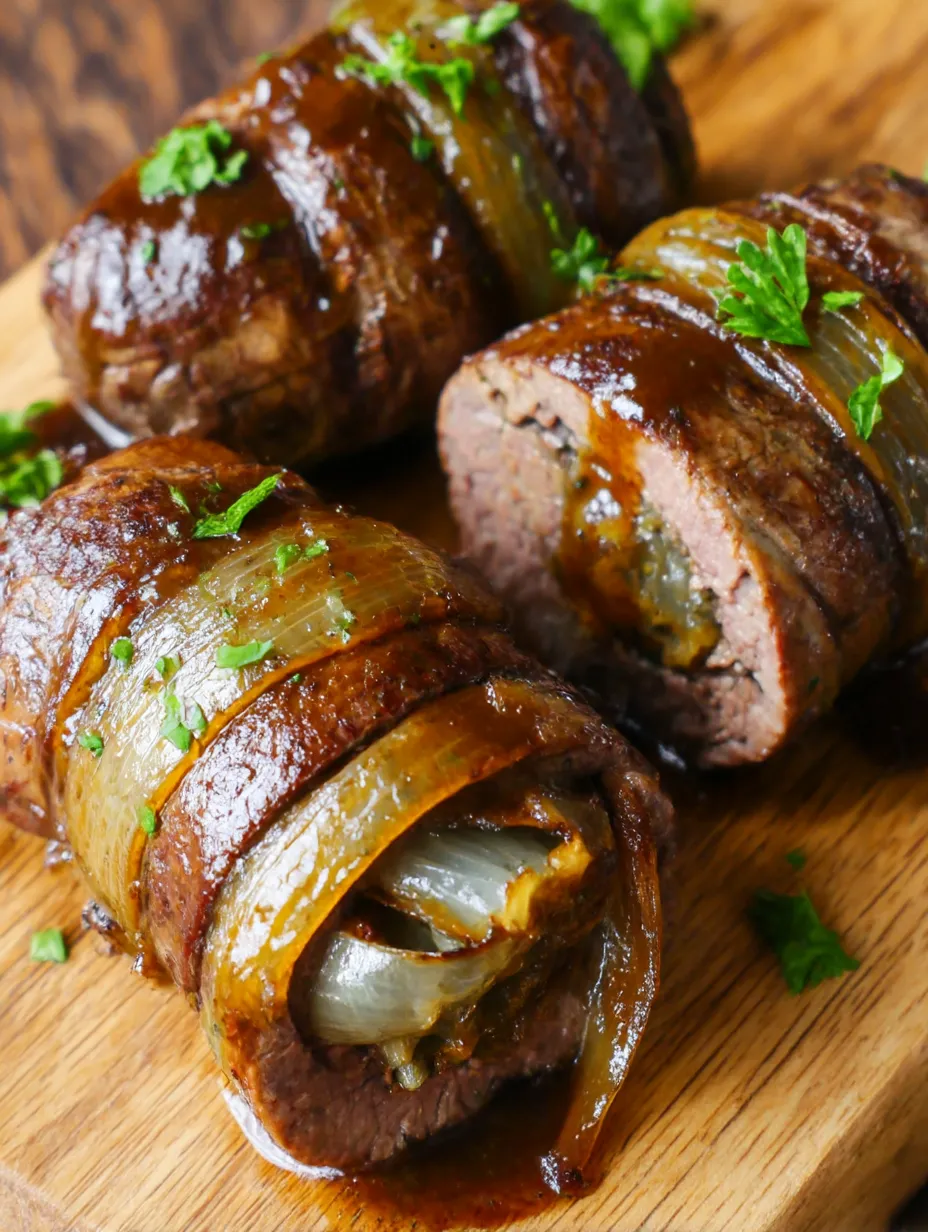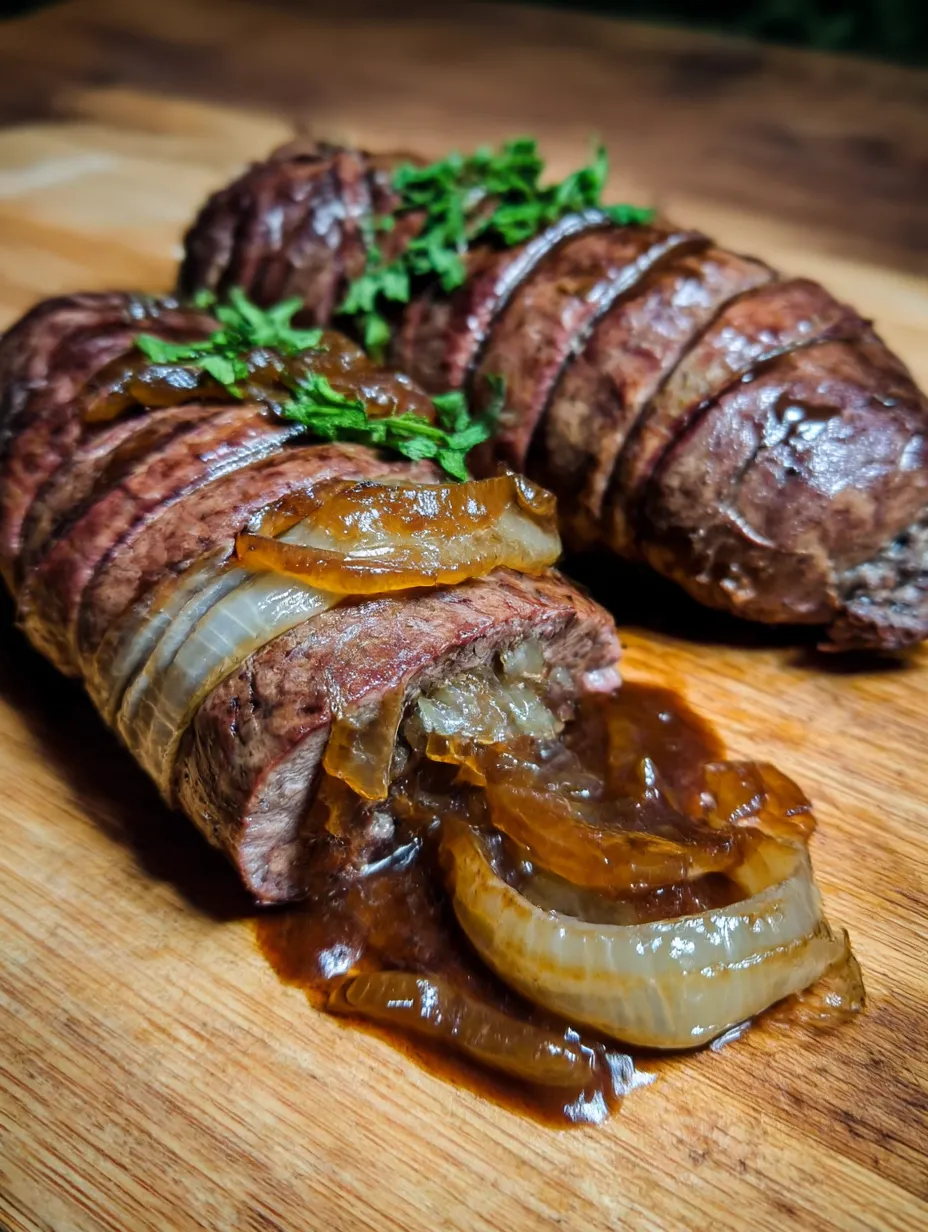 Pin
Pin
This savory German Beef Rouladen fills the kitchen with warmth and irresistible aroma as thin beef slices are wrapped around tangy pickles and onions, then simmered low and slow until fork-tender. It is my favorite dish to serve when I want to treat my family to something truly comforting yet impressive, often bringing happy memories from my grandmother’s table to our own.
The first time I made these rouladen for a family reunion everyone was sure I had cooked all day but it easily came together with just some careful rolling. Now it’s the most requested meal for Sunday dinners.
Ingredients
- Beef rouladen thinly sliced: Choose well-marbled beef from the butcher counter for best tenderness
- Dijon mustard: Brings a punch of flavor and helps keep the meat moist opt for traditional Dijon for authenticity
- Onion finely chopped: Look for onions that are firm and bright for the sweetest flavor
- Pickles sliced: German-style or dill pickles are ideal for tang they brighten up the dish
- Salt and pepper: For seasoning both inside and out use fresh cracked pepper if possible
- Vegetable oil: Use a neutral oil with a high smoke point for perfect browning
- Beef broth: Pick a rich bone-broth or stock without artificial flavors for deep sauce flavor
- Flour: For thickening the sauce all-purpose flour works best but make sure it is fresh
- Fresh parsley for garnish optional: Adds color and freshness pick a bright green bunch
Step-by-Step Instructions
- Preparation:
- Lay Out and Season
Place each beef slice flat on a clean surface and gently pound with a meat mallet until even. Season both sides generously with salt and freshly cracked pepper to enhance flavor at every layer. - Add Mustard and Fill:
- Spread a full tablespoon of Dijon mustard over one side of each beef slice, making sure it reaches every edge. Scatter a spoonful of finely chopped onion and several slices of pickle across the mustard.
- Roll and Secure:
- Starting at the short end, roll each beef slice up tightly around the filling to trap everything inside. Secure each roll firmly with kitchen twine or use toothpicks inserted at each end.
- Sear the Beef Rolls:
- Pour vegetable oil into a heavy-bottomed skillet and heat on medium-high until shimmering. Add the beef rolls gently, turning each with tongs to brown on all sides. This step locks in juices and builds the base for the sauce. Move the seared rolls to a plate.
- Build the Sauce:
- In the same pan with the drippings, sprinkle in the flour and whisk vigorously for about a minute until no dry spots remain and the flour begins to brown. Gradually pour in the beef broth while scraping up every browned bit from the skillet. This creates a deep-flavored sauce foundation.
- Simmer Gently:
- Nestle the browned rouladen back into the skillet so they sit snugly in the sauce. Cover the pan and keep the heat low, letting them gently simmer for at least ninety minutes. Check with a fork after an hour and a half—the beef should be tender enough to cut with a spoon.
- Finish and Serve:
- Once tender, remove the rouladen from the skillet and let them rest for a few minutes so the juices stay inside. Slice and arrange on a serving platter, then generously spoon the sauce over the top. A sprinkle of chopped fresh parsley adds a lovely finish.
 Pin
Pin
I always look forward to the tang from the pickles nestled inside the silky beef—every bite takes me back to family holidays where laughter filled the kitchen and we all savored seconds. My youngest once tried making mini rouladen and still insists his are better than mine.
Storage Tips
Store cooled leftovers in a tightly sealed container in the fridge for up to three days. For longer storage freeze rouladen and sauce in portions—thaw overnight in the fridge and gently reheat on the stove with a splash of broth to refresh the sauce. This makes weeknights so much easier and tastier.
Ingredient Substitutions
If you cannot find traditional German pickles regular dill pickles work just as well. For an extra meaty flavor smoked ham can replace some of the onions. Gluten-free flour blends can be substituted for traditional flour to thicken the sauce.
Serving Suggestions
Classic sides include creamy mashed potatoes hearty spaetzle or buttered egg noodles for soaking up every drop of sauce. A crisp cucumber salad on the side brightens the plate and gives a cool contrast to the warm savory rouladen.
 Pin
Pin
Cultural Note
German Beef Rouladen has roots in hearty home-cooking and was traditionally a festive meal for special Sundays or holidays. It’s still a highlight at Bavarian celebrations and family gatherings connecting generations over its savory goodness.
Recipe FAQs
- → What is the best cut of beef for rouladen?
Opt for thin slices of top round or rump steak, as they roll easily and become tender when braised.
- → Can I use a different type of mustard?
Dijon is traditional, but you can substitute with mild or spicy German mustard to suit your taste.
- → How do I keep the filling from falling out?
Roll the beef tightly and secure each roulade with kitchen twine or toothpicks to contain the filling during cooking.
- → What sides go well with beef rouladen?
Popular choices include creamy mashed potatoes, buttered noodles, or braised red cabbage for a classic meal.
- → Can rouladen be made ahead of time?
Yes. Prepare and cook in advance, then store in the fridge for up to 3 days or freeze for later enjoyment.
